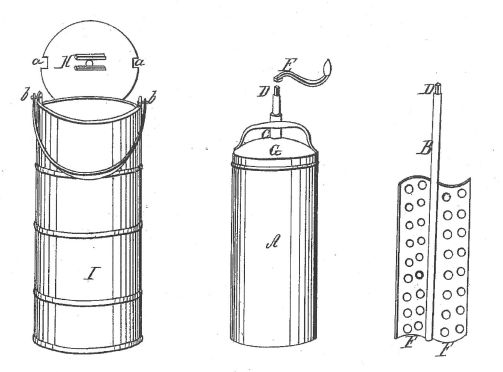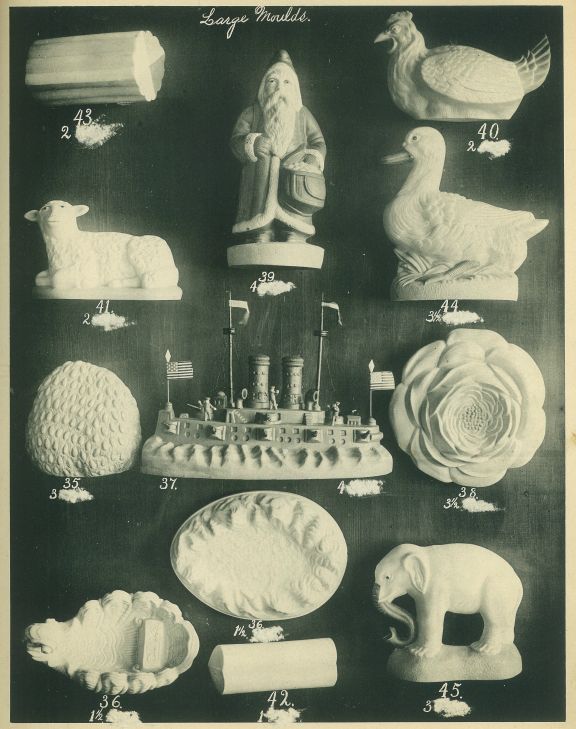We all scream for ice cream! Without question, ice cream is one of the most popular treats in America, but do you know much about its history?
According to Laura B. Weiss, author of Ice Cream: A Global History, iced drinks can be traced back to at least the ancient Greeks and Romans. But many historians believe that the emperors of the Tang Dynasty (618-907 AD) in China may have been the first to eat a frozen milk-like confection — made with fermented cow, goat or buffalo milk which had camphor added to make it flake like snow. Italians generally are credited with inventing ice cream as we know it today, popularizing a concoction of sugar, flavorings (often fruit like lemon or strawberry), and ice or snow sometime in the mid-seventeenth century. Ice cream was particularly favored by the French aristocracy in the 1800s, and Thomas Jefferson is said to have gained an appreciation for the treat while serving as US ambassador to France from 1784-1789.

European settlers arriving in the New World helped to spread ice cream across the country (not literally, of course). The first ice cream parlor is reported to have opened in New York City around 1790, and ice cream recipes began to appear in American cookbooks around that time as well. While making ice cream was originally a rather laborious process, the invention of ice cream freezers enabled the average family to more easily mix up a batch for themselves. The first US patent for a hand-cranked ice cream freezer was issued to Nancy Johnson of Philadelphia in 1843.
The following instructions for making lemon ice cream using a freezer are found on pages 322-324 of Miss Leslie’s Complete Cookery (1854), a book in the National Museum of American History Library:
Have ready two quarts of very rich thick cream, and take out a pint. Stir gradually into the pint, a pound of the best loaf-sugar powdered fine; and the grated rind and the juice of four ripe lemons of the largest size, or of five or six smaller ones… After you have mixed the pint of cream with the sugar and lemon, beat it gradually and hard into the remaining cream, that is, the three pints. Cover it, and let it stand to infuse from half an hour to an hour. Then taste it, and if you think it necessary, stir in a little more lemon juice or a little more sugar. Strain it into the freezer through a fine strainer, (a tin one with small close holes is best,) to get rid of the grated lemon-peel… Cover the freezer, and stand it in the ice cream tub, which should be filled with a mixture, in equal quantities, of coarse salt, and ice broken up as small as possible, that it may lie close and compact round the freezer, and thus add to its coldness. Snow, when it can be procured, is still better than ice to mix with the salt. It should be packed closely into the tub, and pressed down hard. While the cream is freezing, keep it always in motion, whirling the freezer round by the handle, and opening the lid frequently to stir and beat the cream, and to scrape it down from the sides with a long-handled tin spoon. Take care that no salt gets in, or the cream will be spoiled.
When it is entirely frozen, take it out of the freezer and put it in your mould; set it again in the tub, (which must be filled with fresh ice and salt,) and leave it undisturbed till you want it for immediate use. This second freezing, however, should not continue longer than an hour, or the cream will become inconveniently and unpleasantly hard, and have much of the flavour frozen out of it. Place the mould in the ice tub, with the head downwards, and cover the tub with pieces of old carpet while the second freezing is going on. When it has arrived at the proper consistence, and it is time to serve it up, dip a cloth in cold water, and wash it round the mould for a few moments, to loosen the cream and make it come out easily; setting the mould on a glass or china dish… Serve it up immediately lest it begin to melt. Send round sponge-cake with it, and wine or cordials immediately after.

Even with a freezer, that is still quite a bit of work. So you would probably save ice cream only for special occasions, right? And you would want it to look special, too. Many people used decorative ice cream molds to show off the dessert at dinner parties and holiday events. In the Smithsonian Libraries trade literature collection, we have a catalog of ice cream molds — which is actually kind of a mystery item since it has neither a company name nor a date on it. It appears to be from the turn of the century and displays a wide variety of molds — including a Santa for Christmas on the page shown here. It also features molds shaped like fruits, vegetables, animals, and flowers. Some were in the form of bowls, baskets, or shells so that fresh fruit could be served in them. You also will find patriotic symbols like flags, ships, eagles, and even George Washington, since ice cream has long been associated with Independence Day.
 But I think my favorite mold from this catalog is one shaped like a chameleon — because nothing says “elegant dining” like a little frozen lizard on your plate.
But I think my favorite mold from this catalog is one shaped like a chameleon — because nothing says “elegant dining” like a little frozen lizard on your plate.


One Comment
If the title of my post got you humming, it’s because there was a popular 1927 song by the same name! We heard from a curator in the Culture and Arts Division at the National Museum of American History, who found the following webpage with the song lyrics: http://www.barrypopik.com/index.php/new_york_city/entry/i_scream_for_ice_cream_i_scream_you_scream_we_all_scream_for_ice_cream/